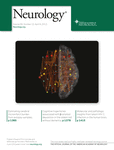Neurology:美国神经病协会更新运动相关脑震荡指南
2013-04-24 Neurology dxy
美国神经病学会(AAN)2013年会的一场新闻发布会上,发布了运动相关脑震荡评价与处理的新AAN指南。推荐内容更新了1997AAN运动脑震荡实践参数,在线发表于2013年3月18日的Neurology。新指南力图通过处理以下4个问题应对脑震荡和轻微脑损伤处理上的不确定性和不一致性:1.对运动员而言,什么因素增加或减少脑震荡风险?2a.对疑似已有脑震荡运动员而言,在鉴定是否脑震荡方面什么诊断工具有用
美国神经病学会(AAN)2013年会的一场新闻发布会上,发布了运动相关脑震荡评价与处理的新AAN指南。推荐内容更新了1997AAN运动脑震荡实践参数,在线发表于2013年3月18日的Neurology。新指南力图通过处理以下4个问题应对脑震荡和轻微脑损伤处理上的不确定性和不一致性:
1.对运动员而言,什么因素增加或减少脑震荡风险?
2a.对疑似已有脑震荡运动员而言,在鉴定是否脑震荡方面什么诊断工具有用?
2b. 对疑似已有脑震荡运动员而言,在鉴定哪些人处于严重或持久早期损害、神经病学灾难或慢性神经行为损害的风险增高状态方面,什么诊断工具有用?
3. 对脑震荡运动员而言,在鉴定哪些人处于严重或持久早期脑震荡后损害、神经病学灾难、复发性脑震荡或慢性神经行为损害的风险增高状态方面,什么临床因素有用?
4. 对脑震荡运动员而言,什么干预措施可提高恢复率、减低复发性脑震荡风险或减少长期后遗症风险?
新AAN推荐内容分为:职前咨询服务,疑似脑震荡的评定、诊断和处理,已确诊脑震荡的处理。新AAN推荐内容在新闻发布会上由主要作者ChristopherC.Giza医学博士和JeffreyS. Kutcher医学博士很好地作了概述。但该指南的某些方面可能被作不同解读,尤其是由它来决定疑似脑震荡的运动员何时恢复参赛时可能被作不同解读。
与脑震荡相关的拓展阅读:

Summary of evidence-based guideline update: Evaluation and management of concussion in sports
Report of the Guideline Development Subcommittee of the American Academy of Neurology
Objective
To update the 1997 American Academy of Neurology (AAN) practice parameter regarding sports concussion, focusing on 4 questions: 1) What factors increase/decrease concussion risk? 2) What diagnostic tools identify those with concussion and those at increased risk for severe/prolonged early impairments, neurologic catastrophe, or chronic neurobehavioral impairment? 3) What clinical factors identify those at increased risk for severe/prolonged early postconcussion impairments, neurologic catastrophe, recurrent concussions, or chronic neurobehavioral impairment? 4) What interventions enhance recovery, reduce recurrent concussion risk, or diminish long-term sequelae? The complete guideline on which this summary is based is available as an online data supplement to this article.
Methods
We systematically reviewed the literature from 1955 to June 2012 for pertinent evidence. We assessed evidence for quality and synthesized into conclusions using a modified Grading of Recommendations Assessment, Development and Evaluation process. We used a modified Delphi process to develop recommendations.
Results
Specific risk factors can increase or decrease concussion risk. Diagnostic tools to help identify individuals with concussion include graded symptom checklists, the Standardized Assessment of Concussion, neuropsychological assessments, and the Balance Error Scoring System. Ongoing clinical symptoms, concussion history, and younger age identify those at risk for postconcussion impairments. Risk factors for recurrent concussion include history of multiple concussions, particularly within 10 days after initial concussion. Risk factors for chronic neurobehavioral impairment include concussion exposure and APOE ε4 genotype. Data are insufficient to show that any intervention enhances recovery or diminishes long-term sequelae postconcussion. Practice recommendations are presented for preparticipation counseling, management of suspected concussion, and management of diagnosed concussion.
本网站所有内容来源注明为“梅斯医学”或“MedSci原创”的文字、图片和音视频资料,版权均属于梅斯医学所有。非经授权,任何媒体、网站或个人不得转载,授权转载时须注明来源为“梅斯医学”。其它来源的文章系转载文章,或“梅斯号”自媒体发布的文章,仅系出于传递更多信息之目的,本站仅负责审核内容合规,其内容不代表本站立场,本站不负责内容的准确性和版权。如果存在侵权、或不希望被转载的媒体或个人可与我们联系,我们将立即进行删除处理。
在此留言









#神经病协会#
60
#Neurol#
52
#脑震荡#
58
#神经病#
70